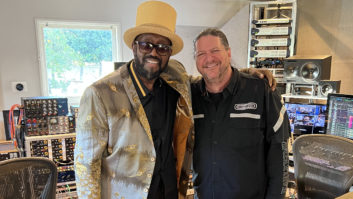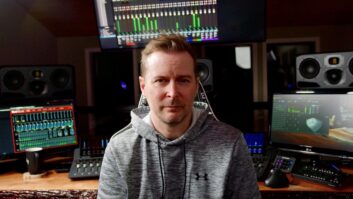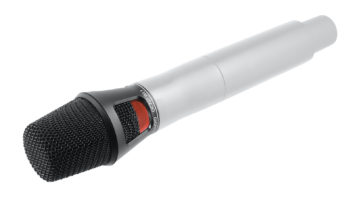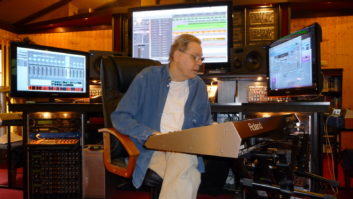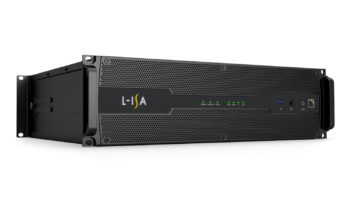The biggest news in Frankfurt was the Messe hierarchy shakeup and subsequent schedule changes. Prolight + Sound dates have changed to Tuesday through Friday, while Musikmesse will run from Thursday to Sunday with all Musikmesse days open to the public. The two events will more or less swap exhibit spaces.

On one level, this should be comforting to PSN’s readers: Prolight + Sound is growing. However, companies that exhibit in both shows will have to cover all six days—as well as pay the jacked-up local hotel rates. Next year’s Messe will have the first major makeover in decades.
As to this year…
USB 3.0 and Thunderbolt keep moving forward. PreSonus’s Studio 192 interface does USB 3.0 and incorporates Fat Channel processing, along with wireless control; Zoom got in the act with the UAC-8 (18 ins and 20 outs, including ADAT and S/PDIF I/O) and the smaller UAC-2. TASCAM’s US-20×20 does 20 simultaneous ins and outs at 44.1/48 kHz, or 12 ins and outs at 176.4/192 kHz (there’s also onboard DSP and word clock sync). Universal Audio updates to its Apollo audio interface line include Thunderbolt 2.0 and new preamps, while Focusrite’s Clarett Thunderbolt made its European debut—and both were joined by Resident Audio’s T4 bus-powered audio interface.
192 kHz is being touted as important. I guess 96 kHz is so 20th century, because part of the justification for USB 3.0 and Thunderbolt is the need to handle 192 kHz. I’ll let the “Nyquist was my personal friend” folks battle it out about whether this sounds better and if so, why; but adopting 192 kHz is pretty disruptive to today’s multitrack studio.
Revenge of the ADAT. Remember stand-alone digital recorders? Inexpensive solid-state storage has changed the game again. Joining JoeCo’s various rack mount offerings, XI-Machines introduced a 1U, 194-track (at 48 kHz/24-bit) audio recorder called Recorder.1. It runs Nuendo Live software (there are DVI and HDMI outs for monitoring) and includes a choice of MADI or Dante interfacing; three different “RecPacks” allow various recording times up to 13 hours. Meanwhile, TASCAM’s DA-6400 is being touted as a 64-track backup recorder for DAWs or live mixers. It’s slated to offer several interface boards (MADI, Dante, DigiLink, AVB and AES/EBU).
Hardware/control surface divorces. The irreconcilable differences here seem to be cost and convenience, exacerbated by an affair with Bluetooth. From RCF to Mackie to PreSonus to…you name it, mixers and similar devices are turning into DSP-based engines adorned with I/O, while wireless connections or increasingly, Bluetooth handle control. In fact, Bluetooth was ubiquitous— not for audio, due to the latency issues, but for control from phones, tablets and the like.
Dante’s internal. Dante certainly isn’t new, but these days, just about everything seems to incorporate it. There’s a Dante-enabled desk stand for mics, which connects directly to Ethernet with an RJ-45 connector and works with XLR mics. And, of course, Dante plays well with others, as evidenced by Yamaha’s RSio64-D I/O audio interface. Providing up to 64 ins and 64 outs, it allows a variety of I/O formats to connect to a Dante network. And Mackie’s DL Dante card for the iPad-controlled DL32R provides 32×32 channels of network audio I/O.
So Dante, 192 kHz, wireless control and USB 3.0/Thunderbolt keep growing. Will Messe’s gamble for next year achieve the same results? Check back next April.
Craig Anderton has given seminars on technology and the arts in 38 states, 10 countries, and three languages as well as mastered hundreds of tracks. Check out his latest music at youtube.com/thecraiganderton.
